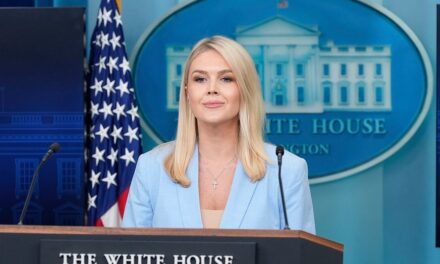In a provocative new article, a writer known for their unconventional views has put forward the argument that the ongoing tariff war initiated by former President Donald Trump could potentially lead to a revitalization of respect and dignity among the American working class. The writer, often described as a ‘MAGA leftist’, blends elements from both the right and left to craft a message that challenges traditional political narratives.
The discussion around tariffs has garnered significant attention in recent years, especially as the U.S. grapples with shifting economic tides. Supporters of tariffs argue that they protect American jobs, raise revenue, and combat unfair trade practices from other countries. Conversely, opponents claim that tariffs could lead to increased prices for consumers and retaliation from other countries. This complex issue invariably evokes strong sentiment across the political spectrum.
The writer suggests that Trump’s approach to tariffs is not simply an economic strategy but a moral imperative aimed at reinstating a sense of pride among American workers who have long felt marginalised in a globalized economy. “The working class has faced relentless challenges—job losses, wage stagnation, and the declining significance of manufacturing in the U.S.,” they assert. By imposing tariffs, Trump is positioning the American worker at the forefront of economic policy, aiming to correct the perceived injustices of prior administrations.
According to the article, the ramifications of global trade agreements and the movement of jobs overseas have created a reality where many in the working class feel as though their contributions to society are undervalued. The writer argues that restoring tariffs is a means of acknowledging these workers’ sacrifices and contributions. “It’s not just about economics; it’s about respect,” they declare. “When jobs come back to America, so does dignity.”
However, this assertion is not without its dissenters. Critics of the tariff policy often highlight potential economic drawbacks, emphasizing the possibility of higher costs for everyday goods, and the fear of a trade war that could spiral out of control. Economists warn that while protective measures can offer short-term relief to specific sectors, they can also lead to long-term complications and retaliatory tariffs from other nations. This creates a balancing act that the current administration must navigate carefully.
The writer acknowledges these criticisms and responds with a call for a broader understanding of the stakes at play. The article emphasizes that the effects of tariffs extend beyond mere numbers on a balance sheet; they create a ripple effect that can lead to broader shifts in societal values and perceptions of labor. “It is crucial to consider the emotional landscape of the American worker,” they argue. “When people feel that their jobs and livelihoods are protected, it fosters a sense of belonging and value.”
The discussion also touches on the political dynamics surrounding tariffs. The polarizing nature of Trump’s policies has often led to divisions within parties, complicating the narrative. The writer points out that even within the Democratic Party, there exists a faction that recognizes the importance of protecting American jobs through a re-evaluation of trade policies. This faction aligns with the writer’s perspective, advocating for policies that place American workers’ needs at the forefront.
Engaging with this idea, the author notes that responses to the tariff policy should not be strictly binary. Rather than solely framing the issue in libertarian terms of free trade versus protectionism, there’s a growing recognition that economic policies must encompass the needs of the workforce. “We cannot continue to view trade solely through the lens of corporate profit margins,” they argue. “It is time to take a long, hard look at how our economic decisions impact real people.”
The writer also brings attention to the historical context of labor movements in America. Tariffs have often been a contentious issue throughout U.S. history, invoked by various administrations for different reasons. The nostalgia for American manufacturing and the working class’s role in building a prosperous nation creates a powerful narrative that resonates with many people. Emphasizing the past, the article underscores that many successful labor movements began at times of economic strife, suggesting that current conditions could catalyze a similar resurgence.
In addition, the writer looks toward the future, exploring how the evolution of technology, automation, and global supply chains will influence the working class. As industries undergo radical changes due to technological advancements, the role of tariffs might shift from protective measures to mechanisms for transition—helping workers adapt to new realities instead of merely clinging to the past. This viewpoint emphasizes that respecting and dignifying the working class includes equipping them with the skills necessary to thrive in a changing economy.
The call for respect and dignity, framed through the lens of tariffs, aims to resonate deeply with workers who may feel alienated or disheartened by the current economic climate. The article touches on rising populist sentiments, which have found expression in various political movements across the country. By approaching the subject from this unique angle, the “MAGA leftist” author attempts to carve out a middle ground that challenges partisan silos.
Critics of this narrative argue that the term “MAGA leftist” could dilute the core messages of both movements, potentially leading to confusion and division. In an age where political identity can be a significant divider, the complex interplays between workers’ rights and national economic policies require nuanced conversations that go beyond simplistic labels.
In conclusion, the writer injects a refreshing perspective into the ongoing debate surrounding tariffs and their impact on the American working class. By asserting that Trump’s tariff war could symbolize a return of “respect and dignity” to workers, the article not only champions a cause but also urges further conversation about the future of labor in America. As economic conditions and political landscapes continue to evolve, engaging critically with policies that affect real lives will likely remain paramount. The intersection of workers’ rights, economic policy, and national identity is a multifaceted discussion that promises to continue shaping the narrative in years to come.
As America navigates the complexities of trade and manufacturing in the global arena, the hope for a reconciliatory approach—one that prioritizes not just profits but the people who create them—may well be what the country needs as it moves forward.
































